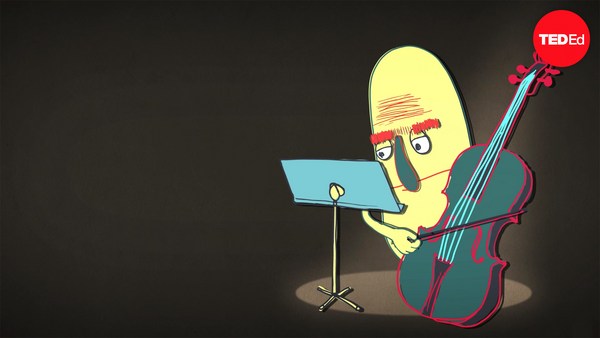These eight ferocious notes open one of the most explosive pieces of music ever composed. Ludwig van Beethoven’s Symphony Number Five premiered in 1808, on a blisteringly cold Vienna night. The piece was just one small part of a lengthy program, and the orchestra had been hastily assembled and under-rehearsed. But despite this inauspicious premiere, the symphony quickly won acclaim. One critic likened the piece to “glowing beams of light, piercing through the darkness.” This intensity persists throughout the composition, and its dramatic musicality continues to move listeners today. So what exactly makes Beethoven’s Fifth so captivating?
When the symphony premiered, Beethoven already had a formidable reputation. While his peers produced music exclusively for religious functions or private events held by their wealthy patrons, Beethoven was one of the first freelance composers. He made his living composing and selling his music to publishers in multiple countries and showcasing his compositions to an adoring public. This career choice gave him the flexibility to compose for self-expression and Beethoven was always pursuing new ways to translate his powerful emotions into music.
At the time, most composers worked within the Classical style, which offered limited options for a piece’s overarching structure and instrumentation. Beethoven composed most of his earlier pieces in this tradition, following in the footsteps of role models like Mozart and Haydn. But with his Fifth Symphony, he experimented with elements of Romanticism. This blossoming mode of composition was known for its expressive melodies, extended forms and surprising instrumentations.
The first movement of Beethoven’s Fifth uses a Classical sonata form, in which a central musical idea is explored, developed, and repeated in an altered manner. Within these parameters, he explores a simple idea with incredible depth. A single rhythmic motif serves as the building block for most of the movement: three short notes, followed by a lingering fourth. One of Beethoven’s biographers would later call this pattern the “fate motif,” because it suggests the figure of fate knocking at the door.
While it's not clear if Beethoven composed the motif with fate in mind, these notes certainly create a gripping hook. The rhythmic pattern creates forward movement, while the prolonged fourth note signals doom. This motif haunts the symphony, including its accompanying parts and rhythmic flourishes. Beethoven experiments with dozens of variations, playing out across different instruments and pitches. Throughout the piece, this motif is passed around the orchestra like a whisper, gradually reaching more and more instruments until it becomes a roar.
The motif’s inventive repetition is a large part of what makes this piece so memorable, but it’s not the only innovation on display. This was the first major orchestral composition to use trombones, and Beethoven also employs a high-pitched piccolo and a low-pitched contrabassoon to give the orchestra a wider range than most classical compositions. Exaggerated musical dynamics further heighten the drama. And harmonically, the piece has a clear emotional arc— beginning in a somber C minor and ending in a triumphant C major.
This progression, from ominous unease to majestic resolution, is a testament to Beethoven’s ability to inject raw emotionality into his music. He wrote this symphony while battling with hearing loss, and his anguish can be heard in the composition’s thunderous and repeating musical phrases. Beethoven continued to compose even after he became completely deaf, producing innovative music until his death in 1827. And the Fifth Symphony’s central motif has continued to resound through the ages. Outside of concert halls, the piece has become a symbol for suspense, revelation, and triumph. The fate motif sounds out the letter V in Morse code, and during World War II, the Fifth Symphony became a code for victory amongst the Allies. The iconic composition can be found in film scores, and it’s even been explored through musical reinterpretations and visual art. But whatever the context, Beethoven’s Fifth takes its listeners through a dark world, then guides them into the light.


